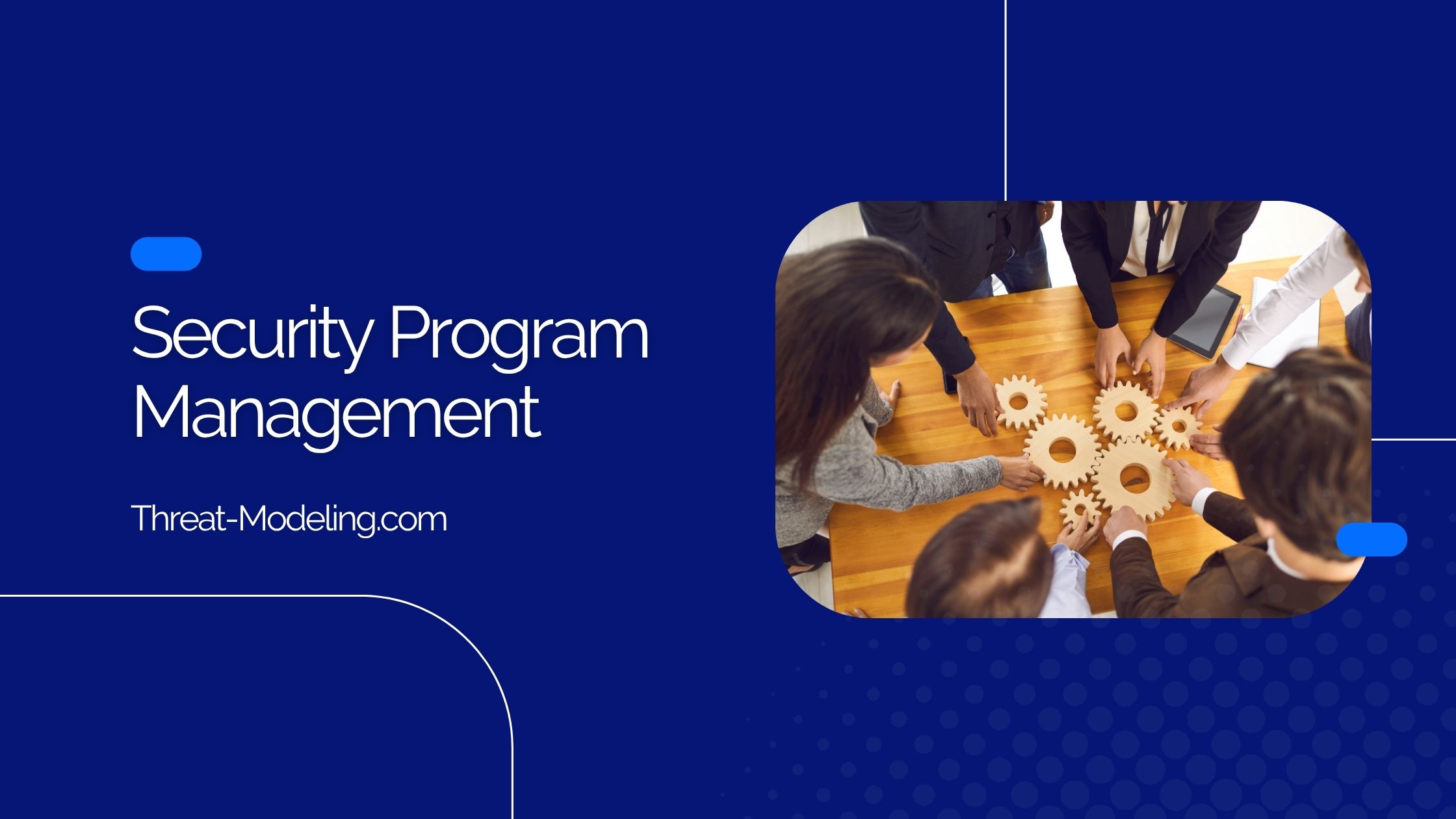What Is Security Program Management and Why Does It Matter?
Security Program Management might sound like a grandiose phrase, yet at its heart, it is quite simple. Picture the entire security effort of an organization as a well-run orchestra. The individual musicians, the firewalls, the policies, the awareness trainings, each have a distinct role and a specific sound. Security Program Management is the conductor on the podium, guiding tempo, ensuring all sections enter at the right moment, and, crucially, adjusting to the unexpected. A virtuoso violinist playing the wrong score can ruin the whole performance, and the same is true for a misaligned security control. Without someone setting direction, measuring progress, and translating business priorities into plain-spoken security tasks, even the best technologies sink into discord. That strategic direction, in essence, is Security Program Management. It marries governance, risk, and compliance with day-to-day operations, turning an intimidating security stack into a disciplined, business-driven function.
The role has evolved rapidly. In the past, a security manager might focus on patch levels and incident counts. Today, the conversation is broader: Do our security investments support the company’s growth plan? Are we matching protection to the actual threats we face? When executives and board members look for answers, the Security Program Manager pulls together data, context, and recommended actions. Think of it as the difference between simply guarding the vault and managing the entire bank’s safety culture. One is tactical; the other is strategic, proactive, and tuned to long-term value.
Defining the Risk Appetite for Information Security
No security program can thrive if no one knows how much risk the organization is willing to carry. This is where risk appetite enters the picture. It is the explicit statement, blessed by leadership, describing how much uncertainty the business can tolerate in pursuit of its objectives. A fintech startup racing to capture market share might accept more technological risk than, say, a regional hospital that is bound by stringent safety laws. Security Program Management translates that appetite into guardrails. In practice, that involves asking questions that sound deceptively straightforward: How much downtime is acceptable for our e-commerce site? How badly would a stolen customer record hurt brand trust? If competitors suffer ransomware every quarter, do we have the patience—and the budget—to level up our defenses ahead of them?
Arriving at answers is rarely simple. The risk appetite conversation forces finance, legal, and operations teams into the same room, pushes jargon aside, and centers on business impact. The Security Program Manager often plays the role of interpreter. They turn technical probability into relatable anecdotes: a five percent chance of outage equals three days of online silence during the holiday rush, which could shave four percent off annual revenue. When executives see risk in business-sized numbers rather than cryptic severity scores, they respond with clearer, faster decisions. That alignment sets the tone for everything else—the framework you select, the controls you prioritize, and the metrics you track.
Developing a Security Program That Actually Works
With risk appetite established, the next challenge is designing a security program that respects those boundaries while staying flexible. The best programs unfold in phases, almost like constructing a house. First comes the foundation: governance structures, policies, and role definitions. These pieces ensure accountability, outline escalation paths, and embed security into procurement, software development, and vendor negotiations. The framing stage follows, where controls and technologies, identity management, network segmentation, and data classification are mapped to business processes. Finally, there is the finishing stage: awareness campaigns, continuous monitoring, and incident response muscle-building.
Although blueprints matter, success leans heavily on culture. Employees will skirt security steps if they see them as barriers rather than boosters. A thoughtful Security Program Manager invites teams to co-design processes, so security feels like a partner, not a hallway inspector. For example, developers might help choose static analysis tools that blend into their continuous integration pipeline. Finance may suggest tweaks to vendor questionnaires that speed up onboarding without diluting due diligence. These small concessions keep the entire program user-friendly and sustainable. After all, a perfect control that nobody follows is worse than an imperfect one that everyone respects.
Measuring a Security Program: Turning Numbers Into Narratives
Designing controls is only half the battle. The other half is proving that the program delivers value. Measurement can descend into a rabbit hole of arcane metrics, so the Security Program Manager must balance precision with clarity. Instead of drowning stakeholders in thousands of logs, they translate technical events into trends: how quickly incidents are detected, how many high-risk findings are closed within service-level targets, or how well awareness training reduces phishing click-through rates. These stories allow leadership to link investments to outcomes, an essential feedback loop that keeps budgets flowing and priorities tuned.
Effective measurement also spotlights areas where risk appetite and reality diverge. Suppose the board tolerates a twenty-four-hour recovery time objective for a critical application, yet the last tabletop exercise proves it would take forty-eight hours to restore service. That data sparks constructive tension and drives strategic discussions: Should the company allocate funds to redundancy, or revise its tolerance? Without measurement, such misalignments sit hidden until an actual breach decides the answer for everyone.
Measuring Security Across Multiple Business Units
Large organizations often resemble small nations, with their own dialects, budgets, and risk priorities. Rolling up security metrics from these distinct units can feel like mixing apples, oranges, and pineapples. The trick lies in defining a small, consistent set of key performance indicators, then allowing each unit to enhance them with business-specific nuance. A manufacturing division might emphasize operational technology safety, while a software division focuses on code security. Both still report on incident response time, patch cadence, and employee training completion so leadership can compare progress on a like-for-like basis.
Governance forums prove invaluable here. Monthly steering committees let business unit leaders voice concerns and swap solutions. That shared stage builds camaraderie and healthy competition: no unit wants to be the lone laggard on the dashboard. Meanwhile, the Security Program Manager ensures data integrity. Metrics must be calculated uniformly; otherwise, comparisons mislead. Think of it as ensuring all teams weigh fruit in the same units before anyone declares the heaviest basket.
Measuring Security Against Peers: The External Benchmark
Internal yardsticks are crucial, yet executives also wonder, “How do we stack up against companies that look like us?” External benchmarking answers that, adding context to in-house performance. If your patch turnaround time beats the industry median by thirty percent, the program looks robust; if it lags, leadership can justify extra resources to catch up. Benchmarks come from industry studies, commercial scoring services, and professional consortiums. Still, raw numbers rarely tell the whole story. A hospital may score lower than a tech firm on innovation-centric metrics but excel in patient data privacy. The Security Program Manager must interpret benchmarks with nuance, explaining why certain gaps matter more than others.
Peer comparison also fuels negotiations. When a business unit balks at adopting multi-factor authentication, showing that ninety percent of direct competitors already enforce it reframes the debate. It shifts the argument from theoretical benefit to market expectation. Over time, these external reference points drive a virtuous cycle: better controls, stronger posture, and a reputation that attracts partners, customers, and investors.
Using NIST CSF Within a Security Program
The National Institute of Standards and Technology Cybersecurity Framework, or NIST CSF for short, offers a flexible, vendor-agnostic structure for organizing and improving security activities. Its five core functions, Identify, Protect, Detect, Respond, and Recover, map neatly onto most organizations’ risk management lifecycles. Security Program Management often leverages NIST CSF as a common language, a bit like sheet music that any seasoned musician can read. By slotting existing controls into the framework’s categories, gaps reveal themselves. Maybe you’re solid on detection tools but thin on recovery planning. The framework does not prescribe products; instead, it prompts thoughtful conversations about whether current safeguards match stated risk appetite.
NIST CSF shines in its tiering concept, which lets companies choose maturity levels that suit their context. A startup might operate comfortably at Tier 2 (risk-informed), while a multinational with strict regulatory exposure might target Tier 4 (adaptive). That scalability is a gift to Security Program Managers aiming to avoid one-size-fits-none mandates. Additionally, NIST CSF aligns well with many global regulations, making compliance mapping less of a headache. You can tell auditors, “Yes, we follow NIST CSF,” and instantly tick half a dozen boxes on their checklist.
Using ISO 27001 Within a Security Program
Where NIST CSF provides guidance, ISO 27001 supplies certification. It lays out requirements for an information security management system, or ISMS, and then allows third-party auditors to validate that system. For organizations operating across borders, the ISO stamp carries weight. Customers in Europe, Asia, and the Americas recognize it as proof of disciplined security practice. Security Program Management, therefore, often blends ISO 27001’s rigorous controls with NIST CSF’s flexibility. Think of ISO as the safety inspection sticker on a car, and NIST as the driver’s manual teaching you how to operate it safely.
Implementing ISO 27001 begins with a gap assessment: Which policies exist, which processes have owners, and which controls are undocumented? From there, the organization sets its Statement of Applicability, selecting which of the framework’s 93 controls apply. In practice, Security Program Managers serve as project leaders, coordinating document creation, risk assessments, internal audits, and the inevitable culture change. Securing top-level support is essential. Certification demands evidence, and collecting that proof often requires cooperation from departments not accustomed to keeping granular logs. The payoff, however, is significant. ISO 27001 certification can shorten sales cycles, command premium rates, and reassure nervous stakeholders who equate certification with reduced liability.
Bringing It All Together: A Practical Narrative
Consider a midsize e-commerce company preparing for rapid expansion. The board sets an ambitious revenue goal but refuses to jeopardize customer trust. Security Program Management steps in to translate that mandate into action. First, the security leader hosts a risk appetite workshop, illustrating how a single data breach could vaporize the projected growth if customers flee. Executives agree to a low tolerance for data loss events and a moderate tolerance for infrastructure downtime outside peak shopping hours.
Next, the team maps current controls to NIST CSF, revealing robust detection but inadequate recovery plans. They draft a phased roadmap: introduce redundant cloud zones, automate server builds, and rehearse disaster recovery quarterly. Meanwhile, they launch an ISO 27001 project, aiming for certification within eighteen months to bolster international expansion. Throughout the process, the program manager keeps metrics front and center. Monthly dashboards show patching compliance creeping upward, phishing simulations trending downward, and tabletop results improving after each exercise.
The company also benchmarks itself through an industry consortium. The first report shows it trails peers in multi-factor adoption. Using that data, the security manager secures the budget to roll out modern authentication. Six months later, a follow-up benchmark places the firm in the top quartile. Those wins build credibility and momentum, turning Security Program Management from a cost center to a strategic enabler.
The Future of Security Program Management
As threats grow more sophisticated and regulators tighten their grip, Security Program Management will only gain prominence. Trends such as zero trust architecture, privacy-by-design, and supply chain security push program managers to widen their lenses. Yet the fundamentals endure: align with risk appetite, embed security into the business, and measure relentlessly. Frameworks like NIST CSF and ISO 27001 provide structure, but it is the human element—clear communication, cross-department collaboration, and a knack for storytelling—that turns frameworks into flourishing programs.
In the end, Security Program Management is less about policing and more about orchestrating. It converts abstract risks into actionable insights, binds technical controls to business goals, and paints a clear picture of progress for stakeholders at every level. Organizations that invest in this discipline position themselves not only to survive the next cyber storm but to thrive, secure in the knowledge that their security efforts amplify, rather than inhibit, their strategic ambitions.


